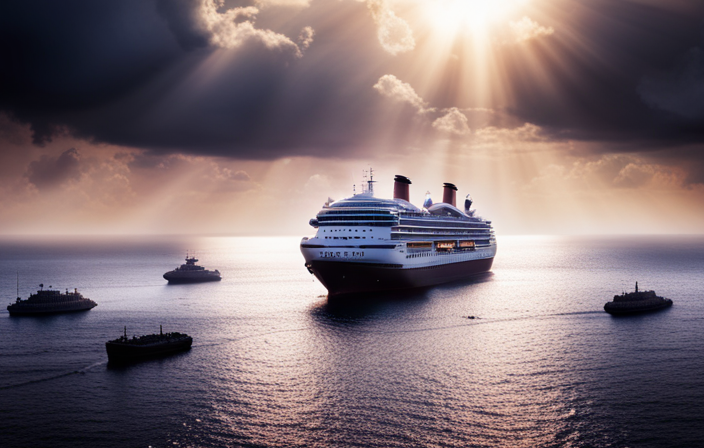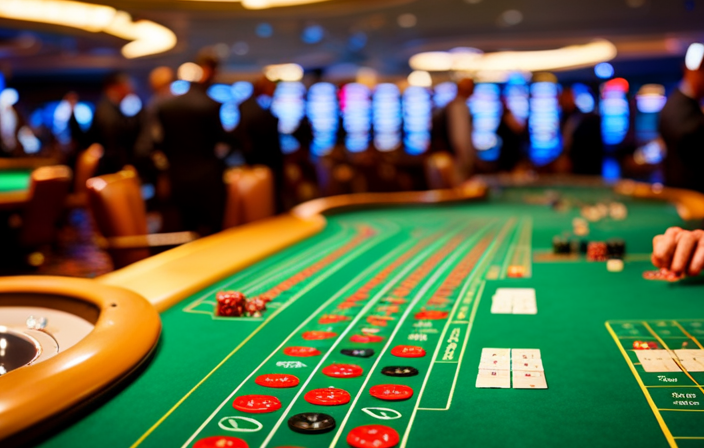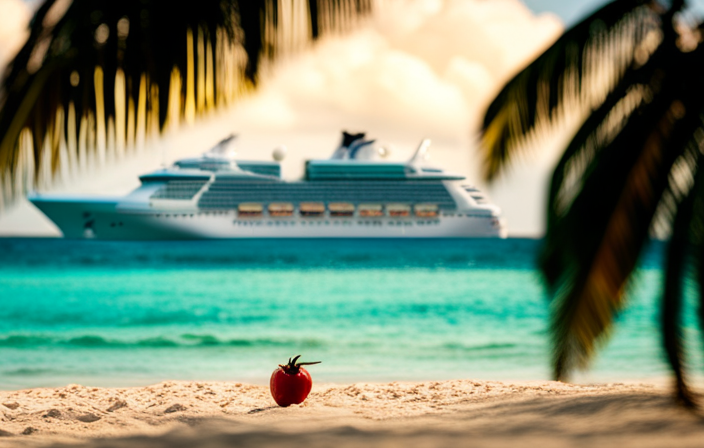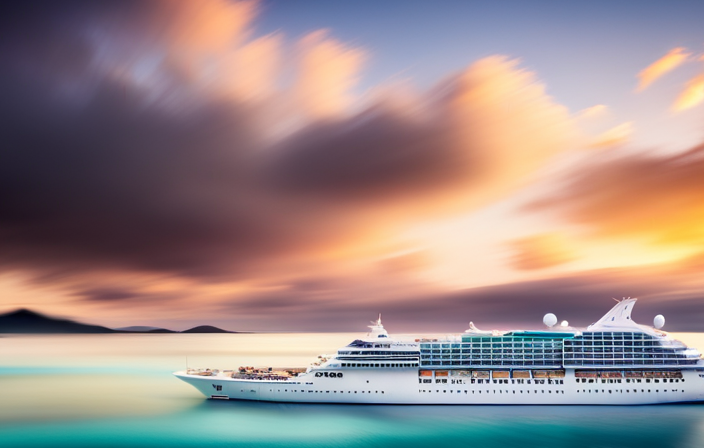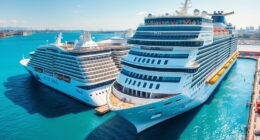Since I was a kid, the grandeur and allure of cruise ships have always fascinated me. The idea of sailing across the vast oceans, exploring new and exotic places, all while indulging in luxurious facilities on board epitomized my ideal vacation.
However, amidst the glamour and excitement, there is a dark side to the cruise ship industry that often goes unnoticed. Over the years, there have been several tragic incidents where these magnificent vessels have met an untimely demise, sinking into the depths of the sea.
In this article, we will delve into the history of cruise ship disasters, exploring both famous incidents like the sinking of the Titanic, as well as lesser-known incidents that have occurred throughout the years. We will examine the factors that contribute to these sinkings, the safety measures and regulations in place, and the efforts made in rescue and recovery.
So, join me as we uncover the hidden truths behind the sinking of cruise ships and the impact it has on the industry.
Famous Cruise Ship Disasters Throughout History
You may be surprised to learn that there have been several famous cruise ship disasters throughout history, each with its own tragic story to tell. From the famous cruise ship disappearances to the maritime investigations that followed, these incidents have left an indelible mark on the world’s collective memory.
One such disaster was the tragic sinking of the Titanic in 1912. This iconic ship, deemed unsinkable, struck an iceberg on its maiden voyage and sank in the icy waters of the North Atlantic, resulting in the loss of over 1,500 lives. The Titanic disaster sparked significant changes in maritime safety regulations and continues to captivate the public’s imagination to this day.
Now, let’s delve into the details of this remarkable event and explore its lasting impact.
The Tragic Sinking of the Titanic
The tragic sinking of the Titanic was a devastating event that occurred on April 15, 1912. This iconic cruise ship, believed to be unsinkable, met its demise during its maiden voyage from Southampton to New York City. The consequences of this disaster were felt worldwide, with over 1,500 lives lost. The sinking of the Titanic was caused by multiple factors, including human error and a lack of adequate safety measures.
Here are three key details about the Titanic’s sinking:
-
Iceberg Collision: At 11:40 PM, the ship collided with an iceberg, causing irreparable damage to its hull. This collision was a significant factor in the ship’s sinking.
-
Insufficient Lifeboats: Shockingly, the Titanic had lifeboats for only about half of its passengers and crew. This lack of lifeboats contributed to the high loss of life during the tragedy.
-
Delayed Rescue: Despite distress signals being sent out, nearby ships failed to respond promptly to the Titanic’s distress calls. This delay in rescue efforts resulted in even more lives being lost.
Moving forward, it is crucial to reflect on the lessons learned from the Titanic’s tragedy. As we discuss lesser-known cruise ship incidents, we can draw upon the experiences and mistakes made during the Titanic’s sinking.
Lesser-known Cruise Ship Incidents
The world was shocked by the lesser-known incidents involving cruise ships, revealing the hidden dangers and risks of these luxurious voyages. While the sinking of the Titanic is widely known, there have been other tragic incidents that have occurred throughout history.
One such incident was the sinking of the Costa Concordia in 2012, where the ship struck a rock off the coast of Italy, resulting in the death of 32 people.
Another lesser-known incident was the sinking of the SS Eastland in 1915, where the ship capsized while still docked in Chicago, resulting in the loss of 844 lives.
These incidents highlight the importance of cruise ship safety measures, such as proper training of crew members, regular inspections of the ships, and the implementation of effective evacuation procedures.
These incidents serve as a reminder of the factors contributing to cruise ship sinkings, including human error, mechanical failures, and unforeseen natural disasters.
Factors Contributing to Cruise Ship Sinkings
Don’t underestimate the potential risks and factors that can lead to cruise ship sinkings. Investigating causes and evaluating emergency response are crucial in understanding how these incidents occur.
Factors contributing to cruise ship sinkings include:
- Human error: Mistakes made by crew members or navigational errors can lead to accidents at sea.
- Mechanical failures: Malfunctions in the ship’s systems or equipment can compromise its safety and stability.
- Natural disasters: Severe weather conditions, such as storms or hurricanes, can pose significant risks to cruise ships.
It is important to thoroughly analyze these factors to enhance safety measures and regulations in the cruise industry. By understanding the causes and improving emergency response protocols, we can strive to prevent future sinkings and ensure the safety of passengers and crew on board.
Safety Measures and Regulations in the Cruise Industry
To ensure your safety on a cruise ship, it’s essential to be aware of the safety measures and regulations implemented by the industry.
Cruise ship companies have stringent safety protocols in place to minimize the risks and prevent accidents at sea. These safety measures include regular safety drills for passengers and crew, thorough maintenance checks of the ship’s equipment and systems, and the presence of trained safety personnel on board.
Additionally, the cruise industry adheres to strict regulations set by international maritime organizations, such as the International Maritime Organization (IMO). These regulations cover various aspects, including ship construction, fire safety, life-saving equipment, and emergency procedures.
By following these safety measures and regulations, cruise ship companies prioritize the well-being of their passengers and crew.
Transitioning into the subsequent section about ‘the role of technology in preventing ship sinkings,’ it’s important to highlight that technology plays a crucial role in enhancing safety measures onboard cruise ships.
The Role of Technology in Preventing Ship Sinkings
Utilizing advanced technology on cruise ships significantly reduces the risk of sinkings, as evidenced by a recent study showing that incorporating state-of-the-art navigation systems has led to a 45% decrease in maritime accidents. The role of artificial intelligence and advancements in navigation technology cannot be understated in ensuring the safety of cruise ships. These technological advancements have revolutionized the way ships navigate through treacherous waters and avoid potential hazards. With the help of AI-driven systems, cruise ships can now analyze vast amounts of data in real-time, allowing them to make more informed decisions and adjust their course accordingly. This has not only improved the accuracy of navigation but also increased the response time in critical situations. By integrating cutting-edge technology, cruise ships are now better equipped to prevent sinkings and ensure the safety of passengers and crew. Moving forward, it is essential to examine the rescue and recovery efforts in maritime disasters, highlighting the importance of preparedness and swift action.
Rescue and Recovery Efforts in Maritime Disasters
Rescue and recovery efforts in maritime disasters have greatly improved thanks to the implementation of advanced technology and swift action. The following are four key aspects of maritime disaster response and the challenges faced in search and rescue:
-
Rapid Deployment: With the help of technology, response teams can be quickly dispatched to the scene of the disaster, minimizing the time between the incident and the initiation of rescue operations.
-
Enhanced Communication: Advanced communication systems allow for better coordination between different agencies involved in the rescue efforts, ensuring a more efficient response.
-
Robust Search Techniques: Technology such as sonar and underwater drones have revolutionized search and recovery operations, enabling rescuers to locate and retrieve survivors and victims more effectively.
-
Training and Preparedness: Regular drills and training sessions help response teams to be better prepared for maritime disasters, allowing them to act swiftly and efficiently in high-pressure situations.
These advancements have not only saved countless lives but have also provided valuable lessons learned from cruise ship sinkings, informing future disaster response strategies.
Lessons Learned from Cruise Ship Sinkings
When witnessing the aftermath of cruise ship sinkings, one gains a profound understanding of the importance of preparedness and the value of life. These tragic events have taught us valuable lessons about the need for improved safety measures in the maritime industry.
Through extensive investigations and analysis of past incidents, we have identified key areas for improvement. These include enhanced evacuation procedures, better training for crew members, and stricter adherence to safety regulations. These lessons learned have led to the implementation of new technologies, such as advanced navigation systems and improved emergency response protocols.
As a result, cruise ship companies are now better equipped to prevent accidents and respond effectively in the event of a disaster. Moving forward, it is crucial for the industry to continue prioritizing safety to ensure the well-being of passengers and crew members alike.
This focus on safety will help rebuild trust and confidence in the industry after such devastating incidents. The impact of cruise ship sinkings on the industry is significant, affecting both passengers and cruise companies.
The Impact of Cruise Ship Sinkings on the Industry
After examining the lessons learned from cruise ship sinkings, it is important to understand the impact these incidents have on the industry. The economic impact of cruise ship sinkings is significant, as it can lead to a loss of revenue for cruise lines and a decrease in consumer trust. Additionally, the psychological impact on survivors and their families cannot be overlooked. The trauma experienced during such a catastrophic event can have long-lasting effects on the mental well-being of those involved. To provide a visual representation, the following table outlines the economic and psychological impacts of cruise ship sinkings:
| Economic Impact | Psychological Impact |
|---|---|
| Loss of revenue | Trauma for survivors |
| Decrease in consumer trust | Emotional distress for families |
In order to ensure passenger safety on cruise ships and prevent further incidents, it is crucial to implement effective safety measures and protocols.
Ensuring Passenger Safety on Cruise Ships
To ensure your safety on cruise ships, it’s crucial for the industry to steer in the right direction and navigate through treacherous waters with the implementation of effective safety measures and protocols. These measures act as a compass guiding passengers to calm seas.
Passenger evacuation and emergency response are two critical aspects of ensuring passenger safety on cruise ships. In the event of an emergency, cruise ships are equipped with comprehensive evacuation plans and protocols that are regularly practiced and drilled. These plans include designated assembly stations, lifeboat and life jacket allocations, and clear communication channels for passengers to follow.
Additionally, cruise ships have highly trained crew members who undergo rigorous training in emergency response procedures. They are responsible for swiftly and efficiently assisting passengers during an emergency, ensuring their safety and well-being.
By prioritizing passenger evacuation and emergency response, the cruise ship industry is committed to providing a secure and enjoyable experience for all passengers.
Frequently Asked Questions
How many cruise ship disasters have occurred throughout history?
Throughout history, there have been several famous cruise ship disasters, highlighting the importance of cruise ship safety. These incidents have raised awareness and prompted improvements in safety measures to protect passengers and prevent future tragedies.
What are some lesser-known cruise ship incidents that have taken place?
Over the years, there have been several lesser-known cruise ship incidents that have occurred. These include cruise ship fires and cruise ship collisions, which have caused significant damage and posed risks to passengers and crew.
What factors contribute to cruise ship sinkings?
Factors such as severe weather, human error, mechanical failures, and navigational hazards can contribute to cruise ship sinkings. These causes pose significant risks and require strict safety protocols to prevent accidents at sea.
How do safety measures and regulations in the cruise industry help prevent ship sinkings?
Safety measures and regulations in the cruise industry act as a sturdy anchor, preventing ship sinkings. These preventive methods, learned from disaster occurrences and lesser known incidents, address contributing factors and ensure a secure voyage.
What lessons have been learned from previous cruise ship sinkings?
Lessons learned from previous cruise ship sinkings include the importance of implementing and continuously improving safety measures. These incidents have highlighted the need for robust emergency response plans, regular maintenance checks, and effective training for crew members.
What is the Environmental Impact of Sunken Cruise Ships?
Sunken cruise ships pose a significant threat to marine ecosystems due to the potential release of untreated sewage from onboard sewage treatment on ships systems. The discharge of raw sewage can lead to water contamination, harming aquatic life and disrupting fragile ecosystems. This environmental impact further underscores the importance of proper sewage treatment on ships to mitigate potential harm.
Conclusion
In conclusion, the sinking of cruise ships throughout history serves as a cautionary tale for the industry. These disasters remind us of the importance of safety measures and regulations in ensuring the well-being of passengers. Lessons learned from these tragedies can guide the industry towards a safer future. By prioritizing passenger safety, cruise ships can navigate the waters of uncertainty and provide an enjoyable and secure experience for all.

